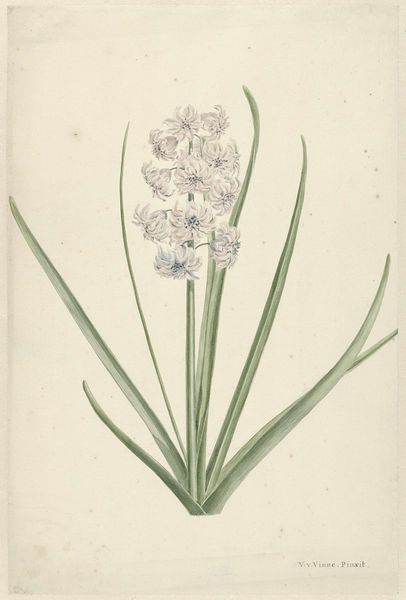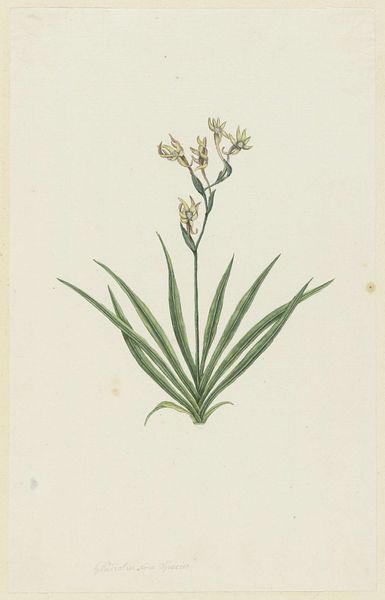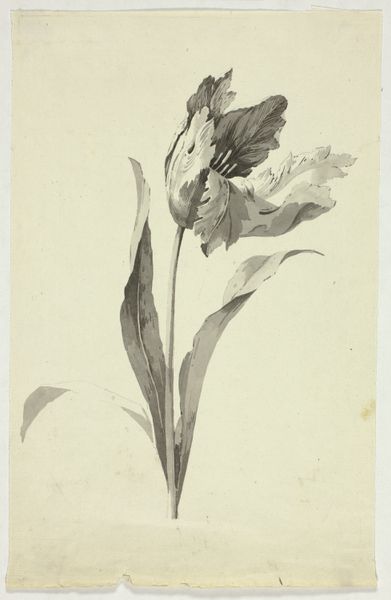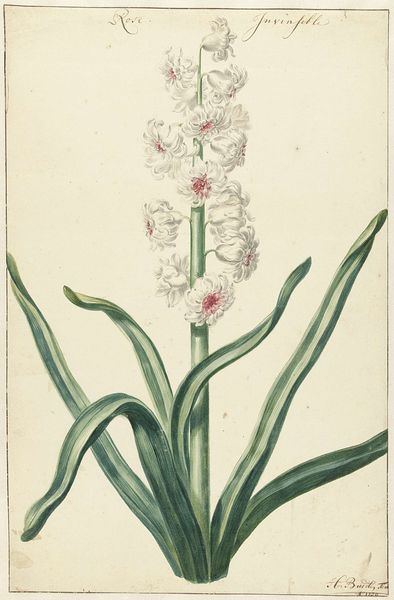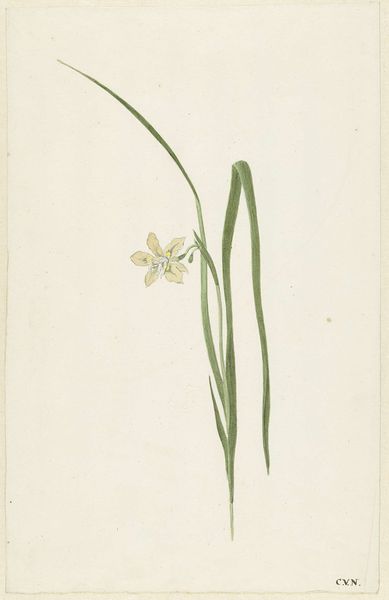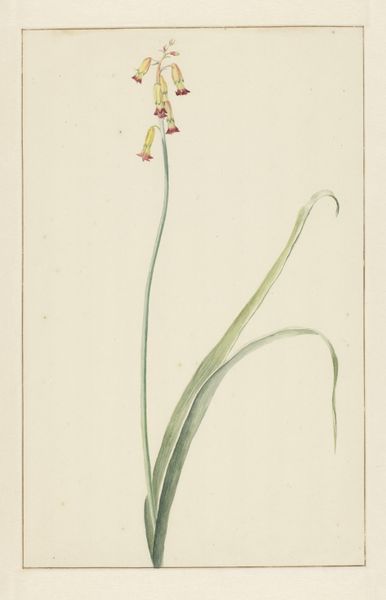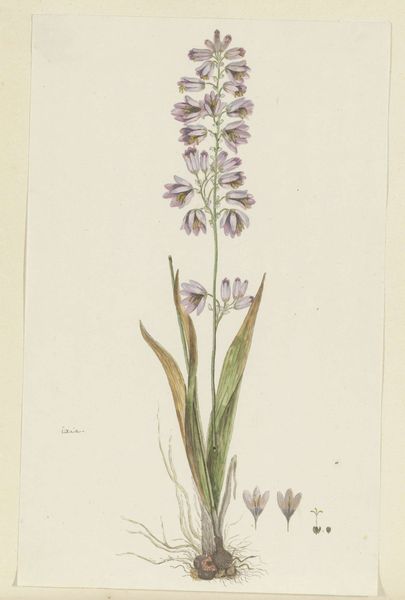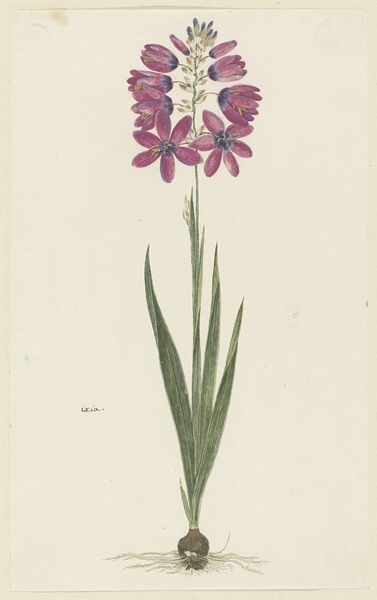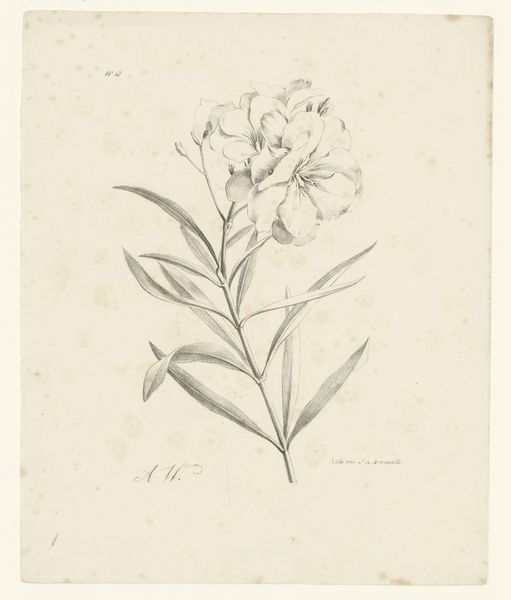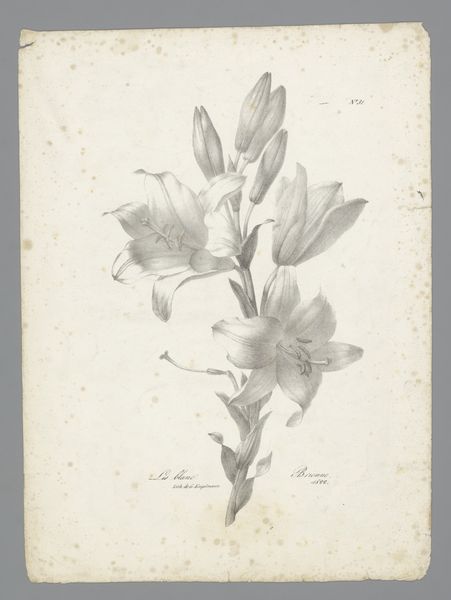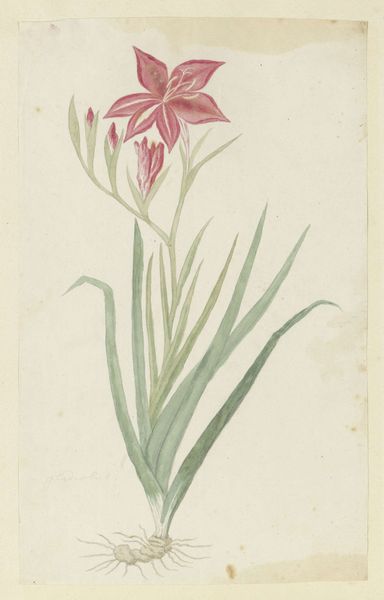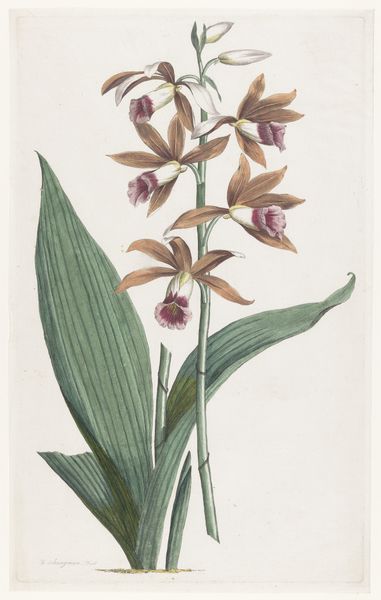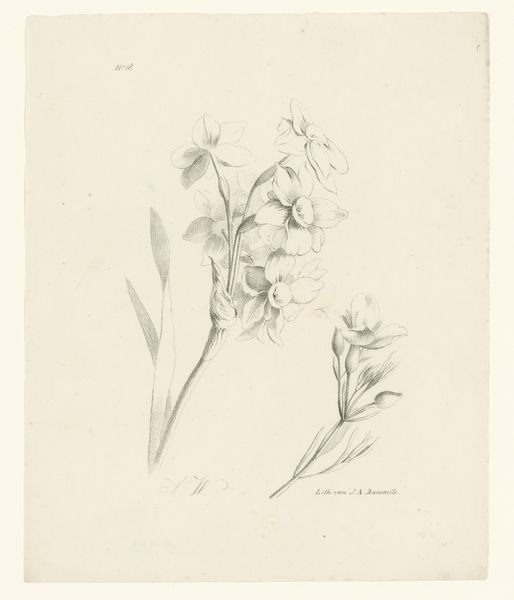
Dimensions: height 267 mm, width 213 mm
Copyright: Rijks Museum: Open Domain
Editor: So, this delicate image is entitled "Fresia," a watercolor drawing created by Cornelis van Noorde, sometime between 1741 and 1795. It has a real simplicity to it – just the single flower and leaves rendered so delicately. How would you interpret this type of work in the late 18th century? Curator: This drawing, though seemingly simple, offers insights into the social and cultural context of its time. Botanical illustrations weren't merely scientific endeavors; they reflected growing global trade and colonial interests. Depicting exotic plants brought prestige to patrons and institutions, aligning nature with power. Editor: Interesting, so botanical art was more political than I had realized. Did the art world see it that way at the time? Curator: Precisely. While celebrating natural beauty, we also need to consider who had access to these images and the underlying systems that made such detailed documentation possible. Think about the funding required for expeditions, the knowledge extraction from colonized lands. It wasn't just about art; it was about empire. How do you think the average person in Europe would have received it? Editor: Perhaps with a sense of wonder, disconnected from those colonial implications. Something beautiful to admire. Curator: Perhaps. The consumption of imagery is always a negotiated process, shaped by access and social standing. Works like this offer a window into understanding those power dynamics at play during the Romantic era. Editor: This gives me a whole new perspective on botanical art; the power dynamics within imagery is something that I didn’t immediately think about when considering this artwork. Curator: And I found myself reflecting on how tastes have shifted to create aesthetic pleasure independent from socio-political narratives. Thanks!
Comments
No comments
Be the first to comment and join the conversation on the ultimate creative platform.

